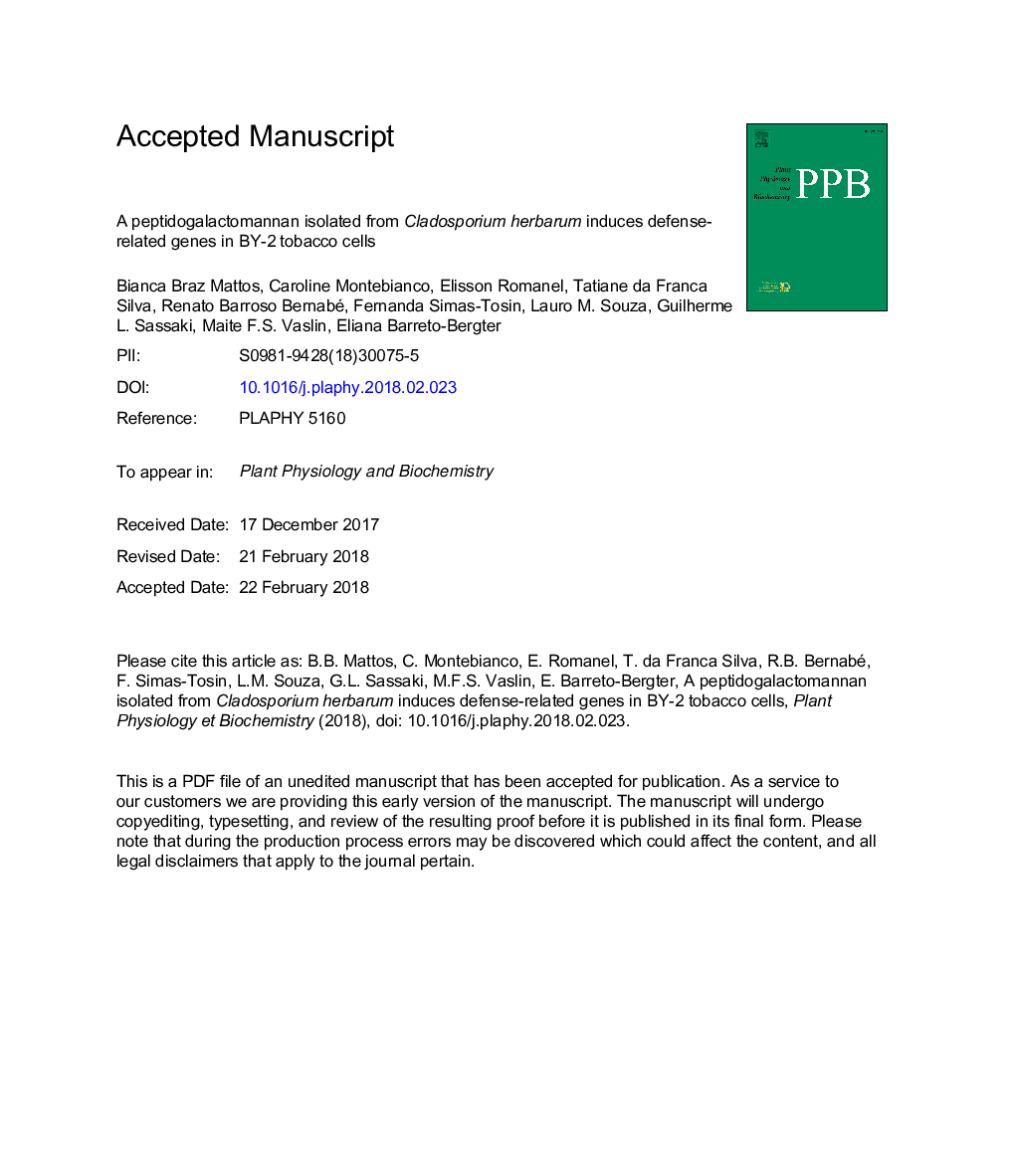| Article ID | Journal | Published Year | Pages | File Type |
|---|---|---|---|---|
| 8353167 | Plant Physiology and Biochemistry | 2018 | 43 Pages |
Abstract
Tobacco BY-2â¯cells were used as a model system to address the question of the role of C. herbarum pGM in cell viability and induction of the expression of plant defense-related genes. Native and partially acid hydrolyzed pGMs (lacking galactofuranosyl side-chain residues) were incubated with BY-2â¯cell suspensions at different concentrations. Cell viability drastically decreased after exposure to more than 400â¯Î¼gâ¯mlâ1 pGM; however no cell viability effect was observed after exposure to a partially acid hydrolyzed pGM. BY-2â¯cell contact with pGM strongly induce the expression of plant defense-related genes, such as phenylalanine ammonia lyase (PAL) and lipoxygenase (LOX), as well as the pathogen-related PR-1a, PR-2 and PR-3 genes, suggesting that pGM activates defense responses in tobacco cells. Interestingly, contact with partially hydrolyzed pGM also induced defense-related gene expression at earlier times than native pGM. These results show that the side chains of the (1â¯ââ¯5)-linked β-D-galactofuranosyl units from pGM play an important role in the first line fungus-plant interactions mediating plant responses against C. herbarum. In addition, it was observed that pGM and/or C. herbarum conidia are able to induced HR when in contact with tobacco leaves and in vitro plantlets roots, producing necrotic lesions and peroxidase and NO burst, respectively.
Keywords
Related Topics
Life Sciences
Agricultural and Biological Sciences
Plant Science
Authors
Bianca Braz Mattos, Caroline Montebianco, Elisson Romanel, Tatiane da Franca Silva, Renato Barroso Bernabé, Fernanda Simas-Tosin, Lauro M. Souza, Guilherme L. Sassaki, Maite F.S. Vaslin, Eliana Barreto-Bergter,
